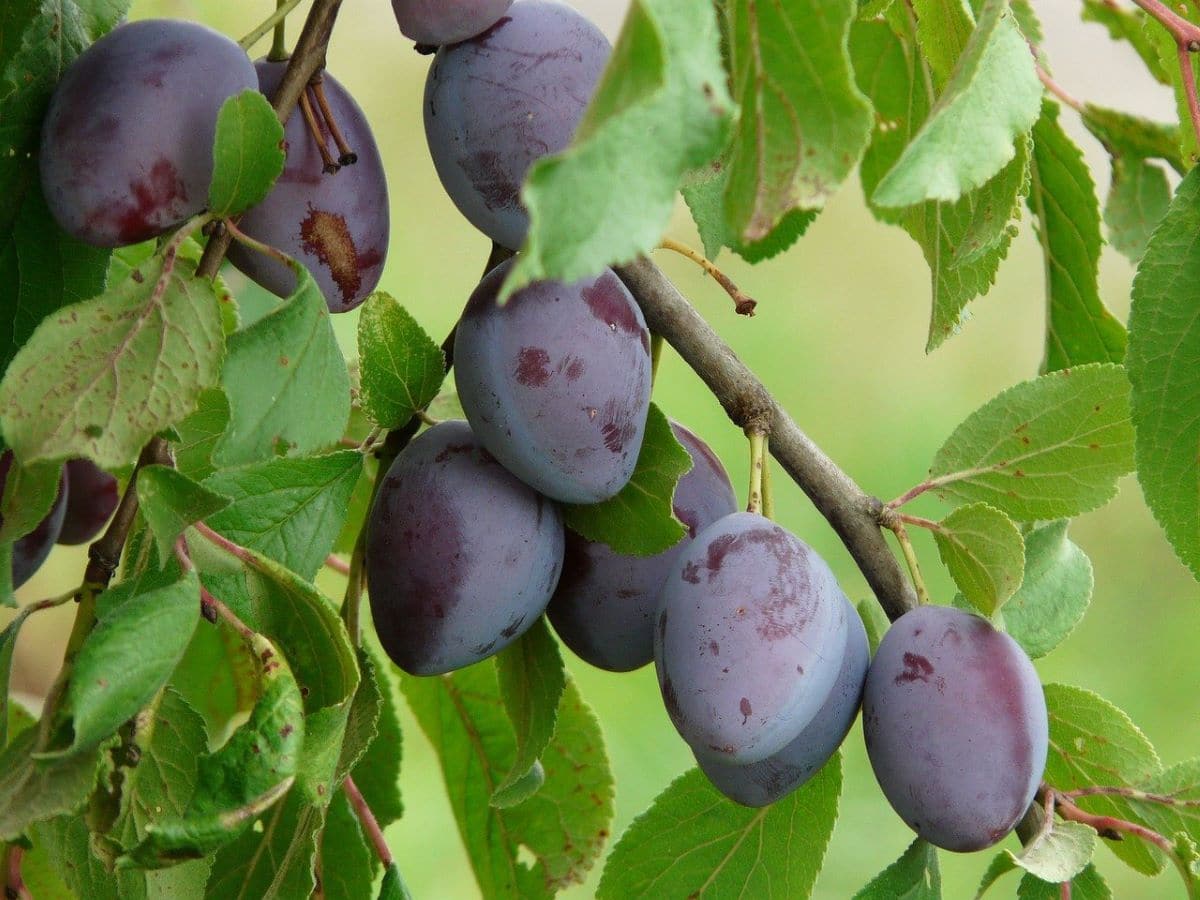
The plum is a fruit tree that, although it is not the fastest growing, it does it is one of those that produces a greater number of fruits, called plums, which have an exquisite flavor.
But it must also be said that it is a very decorative tree. When it blooms in spring, the white of its flowers forms a nice contrast with the green of its leaves, and as if that were not enough, it supports moderate frosts.
Origin and characteristics of the plum
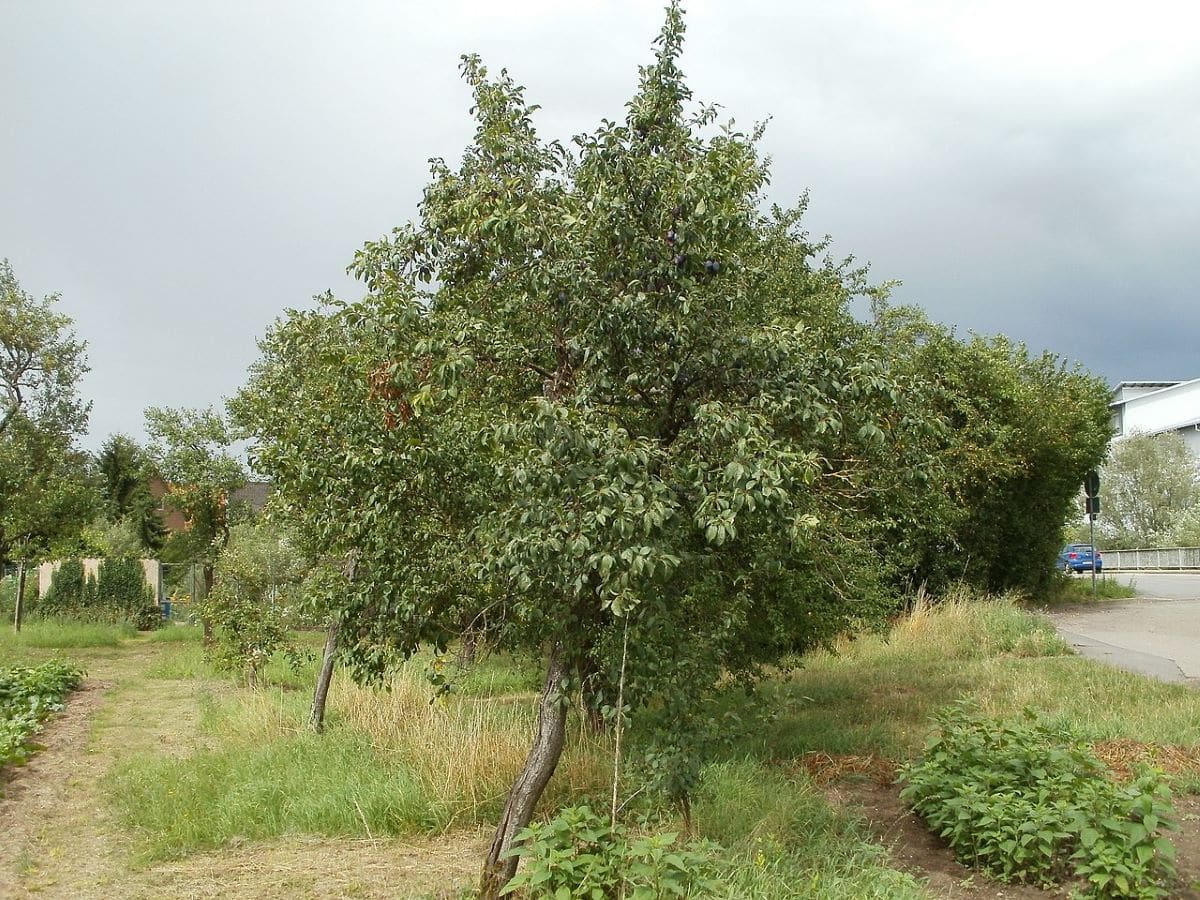
It is a deciduous fruit tree that grows in Southern Europe and Asia Minor. It grows to between 7 and 10 meters in height, and has a straight trunk with a rounded crown. Green leaves sprout from the branches that can be elliptical, obovate or ovate-lanceolate. These yellow in autumn, then dry up and finally fall to the ground.
In spring, its white flowers sprout strongly, practically at the same time as the leaves. They are hermaphrodites, and usually appear in groups of 2-3 flowers, each measuring about 1,5 centimeters in diameter.
Plums ripen throughout the summer. He when it will depend a lot on the variety, the climate and the care it receives. The size and color also vary, but in general we speak of drupes of about 5 centimeters in the shape of a globe or ellipsoidal with yellow, reddish, purple, green skin, etc.
How long does it take for the plum to bear fruit?
The answer to that question will depend a lot on the cultivar, and also on the size of the tree. And this is a fruit tree that is usually sold grafted, precisely for, among other things, such as improving its resistance to pests and / or diseases or improving its adaptability to limestone soils, getting it to bear fruit in a short period of time. .
Therefore, there is no single answer. The flowers are hermaphroditic, with which, it is possible to get a seed plum. But for it to bear fruit we will have to wait more years.
So that you know more or less when it bears fruit, you should know that:
- Plums obtained from seed take approximately 6-8 years.
- Grafted plums take about 3 years (as long as they are at least 1,5-2 meters tall, which is what those that are marketed usually measure).
Plum varieties
There are many varieties of plums, which are classified into two groups:
- European plums: they require a greater number of cold-hours * (around 700-1000) to bear fruit, so they are especially recommended for temperate climates, with mild summers and winters with temperatures below zero.
- Claudia
- D'Agen
- Stanley
- President
- Asian plums: are those of the prunus salicina, or Chinese plum. In addition, it is also a tree that is widely used for grafting European plum. They require less cold hours (between 500 and 900), and tend to bear fruit earlier.
- Formosa
- menthey
- red beauty
- Santa Rosa
What is the care of the plum tree?
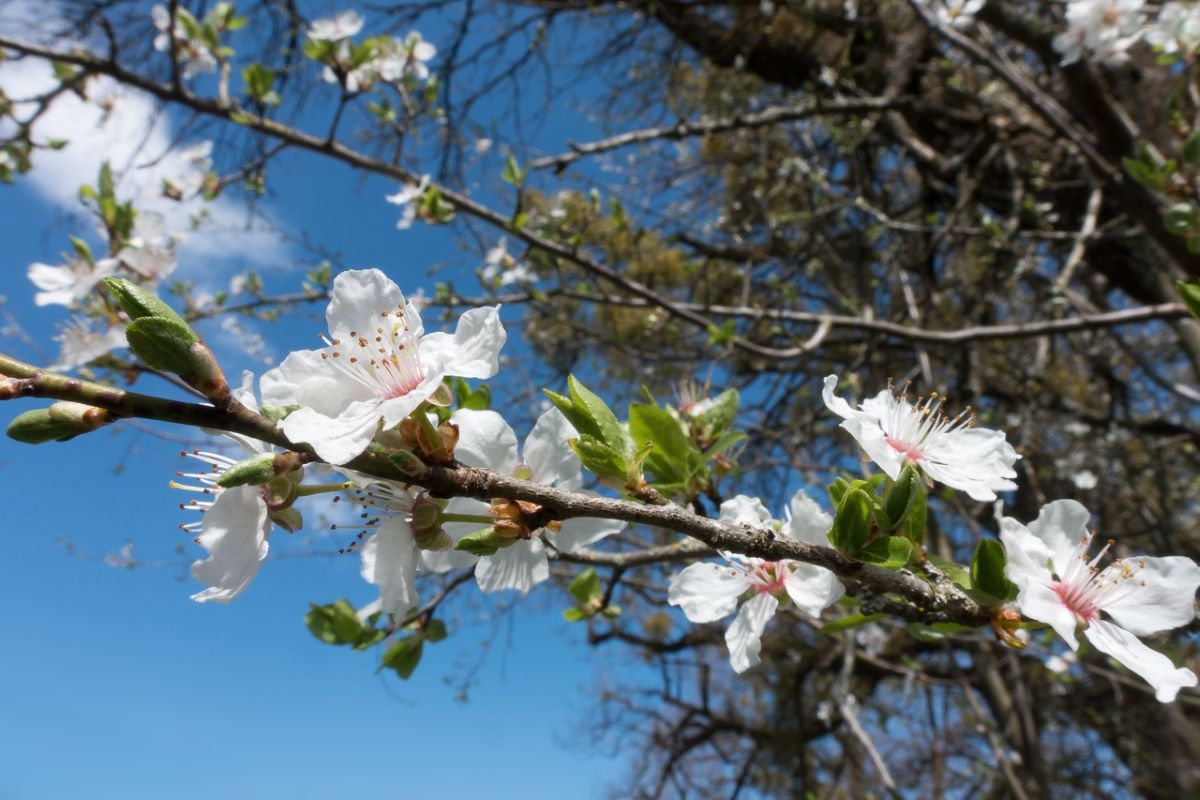
The plum is a fruit tree that requires a series of care for it to be well. So if you want to know how to grow it and give lots of plums, then I'm going to tell you everything you need to know about this tree:
Location
It is a plant that has to be cold in winter, so it will be put outdoors. What's more, it is necessary that the solar rays fall on it, since in this way it will be able to develop.
If we take into account that it does not grow much, it is possible to grow it in small, medium and large gardens, either as an isolated specimen or in rows.
It can also be kept in a pot, although for this I recommend acquiring a dwarf plum as it does not grow more than 2-3 meters in height.
Where to plant a plum tree?
The plum tree does not withstand the wind very well, so it is advisable to put it near a wall or hedge that serves as protection.
Also, if you live in a cold climate area, the ideal is that put it facing south, since this way you will get the fruits to ripen better.
When can a plum be planted?
The ideal time to plant it is late winter, before their leaves sprout. In the event of late frosts, do not do it until they pass as it would suffer damage.
Irrigation
Irrigation will be frequent in summer, especially in the Mediterranean region and in those warm areas where there is little rain. During this season it may be necessary to water 3-4 times a week, since the soil (or the substrate, if it is potted) dries quickly; therefore, you have to add water until it is very wet.
During the rest of the year the frequency of irrigation will be different, especially if we live in an area where it rains regularly. But, in general, it is not necessary to let the earth remain dry for a long time, as the plum tree does not withstand drought.
Earth
- Garden: prefers cool and deep soils. It can grow in limestone without problem, but it is better to make sure that even if it puddles, it absorbs water quickly.
- Flower pot: if you are going to have your plum in a pot, you have to fill it with, for example, prepared substrates such as the urban garden (for sale here) or the universal. But you can also put a first layer of clay or volcanic clay, and then mulch (for sale here).
Subscriber
The subscriber will be made during those months in which the tree is growing, that is, from the budding of the flowers and leaves in spring, until the cold in autumn / winter.
For this, it is highly advisable to use organic fertilizers throughout the year. You just have to keep in mind that, if you grow it in a pot, it is better to apply liquid fertilizers so that the substrate can continue to absorb the water quickly.
There are many examples of this type of fertilizer, for example:
- Herbivorous animal manure: some are more nutritious than others. For example, chicken provides nitrogen, phosphorus and potassium, which are essential nutrients, but also sulfur, magnesium and micronutrients. The horse manure on the other hand, it is low in nitrogen, and the plum needs contributions of this nutrient to grow well.
- Guano: can be bat guano (the most common) or seabirds like the penguin. It is very rich in nutrients, since it contains nitrogen, phosphorus and potassium, as well as carbonic and uric acids that will allow your fruit tree to grow with enviable health. get it here.
- Earthworm humusWorm castings are almost completely decomposed organic matter. It contains the essential nutrients (nitrogen, phosphorus and potassium), but it also has magnesium, with which, the plum will not only grow as it touches, but will also be able to absorb the nutrients better. Buy it here.
When paying, follow the directions on the package. This way, no problems will arise.
Harvest and storage
Plums ripen throughout the summer, so it will be in this season when they have to be harvested. But It must be done when they have acquired their final color, and when when pressing them gently we notice them a little soft. So we can tear them off the tree with ease.
Afterwards, they can be eaten raw, or kept in the fridge for 2-4 weeks. If you are going to keep them at room temperature, for example in a decorative glass plate, you will have to consume them within a few days.
Multiplication
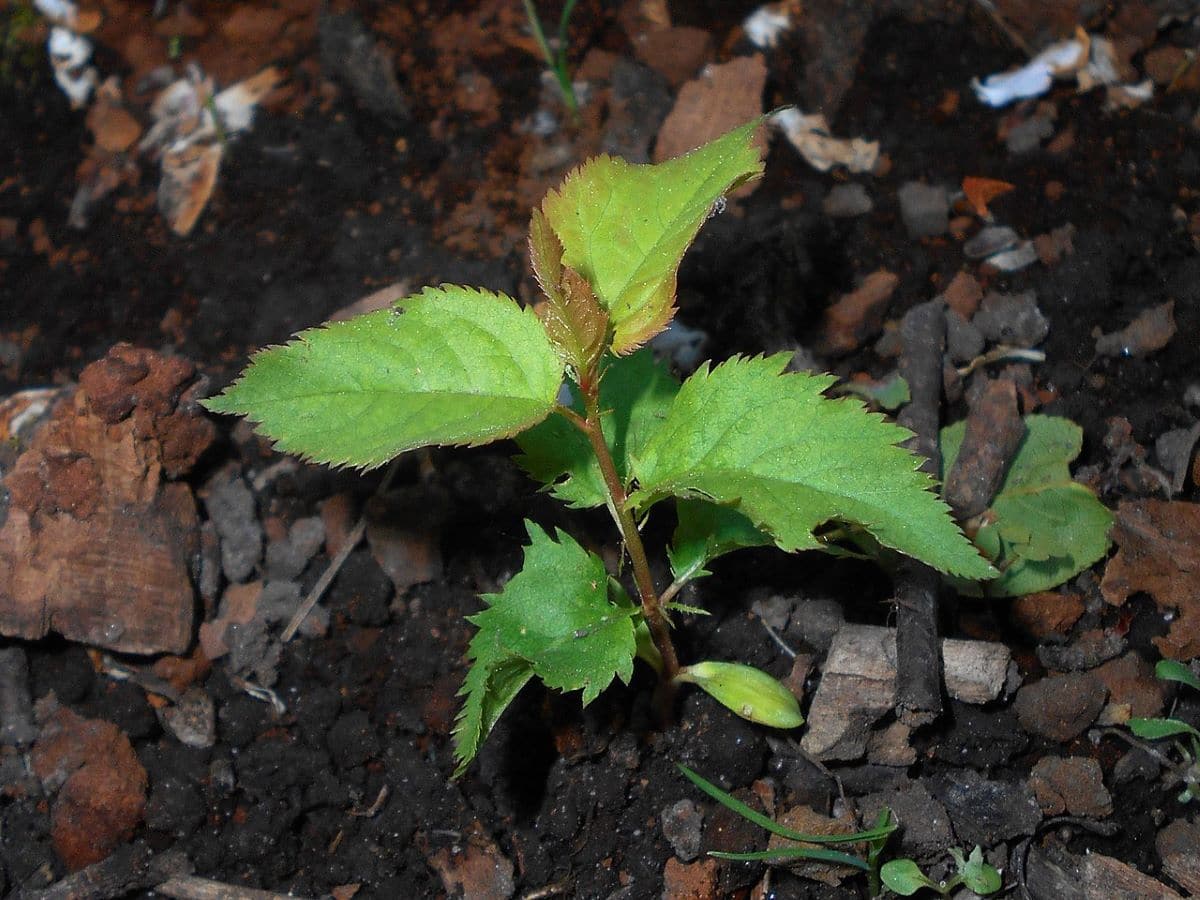
Image - Wikimedia / Salicyna
The plum multiplies by seeds in winter since they need to be cold before germinating, and by grafts in fall or spring.
Seeds
May sow in pots or trays with holes with soil for seedlings. Afterwards, they are placed in a sunny place and watered whenever the substrate looks dry. This is how they will germinate in spring.
In order to prevent fungal (fungal-borne) infections, it is important to apply copper powder to the seedbed.
Grafts
Gusset grafts are made, often on specimens obtained from seed. It consists of making a T-cut of about 2cm of bark from the branch of a tree -for example, a blackthorn- that serves as a rootstock, separating the bark a little with a grafting knife.
Later, a piece of plum branch is obtained, and a cross section is made where it has a bud to finally introduce this piece, called the gusset, in the incision that we have made before.
Pruning
Pruning it will take place at the end of winter. It will consist of the elimination of dry and broken branches, as well as suckers. It can also be used to thin the glass, removing those that intersect, and trimming those that grow too much.
Plum pests and diseases
It is vulnerable to certain pests and diseases, which are:
- Plum gall mite: The Acalitus phloecoptes It is a mite that causes premature leaf drop, as well as the formation of brown bumps along the branch.
- Red mite. the Panonychus ulmi It is another mite that feeds on the sap of the leaves and the fruit. On the leaves we will see grayish spots.
- Screening: The Wilsonomyces carpophilus It is a fungus that produces small holes in the leaves, and purplish spots on the fruits.
- San Jose louse: the cochineal Quadraspidiotus perniciosus it is a parasite that absorbs the sap of plants. It is found in green leaves and branches, as well as in fruits.
- Aphids: aphids of different species damage the leaves, causing them to appear deformed and with spots, as well as the flowers, preventing them from finishing their development and bearing fruit.
Pests can be treated with insecticides approved for organic farming, such as potassium soap, neem oil or diatomaceous earth.
In the case of screening, it is best to treat with fungicides that carry copper.
Rusticity
Plum resists up to -18ºC, as well as 35-40ºC if you have water at your disposal.
How are plums consumed?
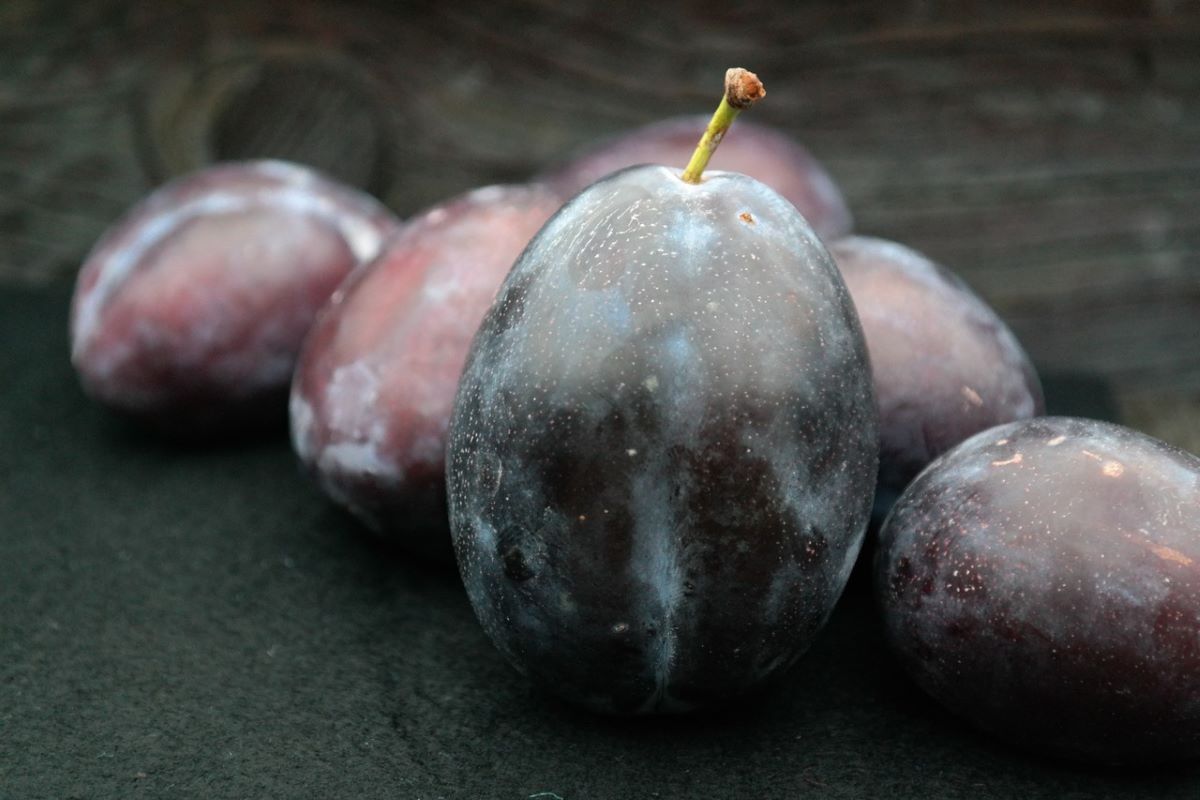
They can be eaten as soon as they have been collected from the tree, or made with them into jams or ice cream. Also, prunes, which are nothing more than dried prunes, are popular.
They have a great nutritional value, since for example 100 grams of plums contain 7 grams of fiber, 2,18 grams of protein, 63.88 grams of carbohydrates, in addition to vitamins (A, B1, B2, B3, C, E and K) , and other essential minerals such as calcium, iron, magnesium or phosphorus.
In short, that the plum tree is good both for a garden and for health. Do you dare to grow your own?